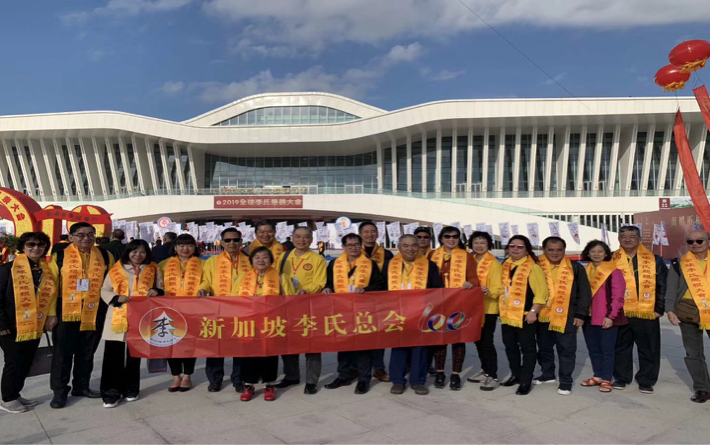Chinese huiguan and the remaking of ancestral communities in Singapore
https://doi.org/10.25542/xzcc-gysm
Huiguan, also known as clan associations or voluntary associations, are traditional civil and commercial institutions established by Chinese people of the same place of origin, dialect or surname who do business, work or study away from China.
Originally developed during the Ming (1368-1644) and Qing (1636-1912) dynasties to provide help (e.g., residence and funding) for members and to safeguard their collective interests in receiving places, they were later established in other countries through the Chinese diaspora.
Historically, huiguan was not only an important source of support for the Chinese diaspora when they struggled to start new lives in host countries, it also played a large part in helping them maintain connections with ancestral places.
After several decades of societal transformation, the huiguan landscape in host communities has inevitably been reconfigured in many ways. Thus, several questions arise: What is their status quo? What kind of local, national, and transnational changes are they facing? Which huiguan are suffering from decline? What kind of huiguan are undergoing revival? What are their renewal strategies for maintaining their significance along with local, national and global changes?
This short article presents preliminary background information of Chinese huiguan in Singapore. It also briefly introduces our MOE-tier 1 project which explores the (re)making of ancestral communities through the study of huiguan in transition.
Huiguan in Singapore
This new project focuses on huiguan in Singapore, where the Chinese form the largest population group and where there is a strong huiguan culture. Singapore has around 250 huiguan in total. It embraces different kinds of huiguan, including locality-based, surname-based, or combined ones.
Generally speaking, locality-based huiguan, with members who speak the same dialect or come from the same ancestral village/region, comprise the predominant form in the huiguan landscape in Singapore.
This has a historical reason: in new lands, immigrants speaking the same dialect communicate relatively better with each other and easily form into groups to claim and protect rights. Most immigrants here came from the two major ancestral places of Fujian and Guangdong provinces in China.
Such regional orientations produced the current dominant dialect groups, including Fujian huiguan, Chaozhou huiguan as well as many small-scale huiguan (e.g., Nan’an huiguan and Shunde huiguan) whose ancestral places are administratively within Fujian and Guangdong provinces.
In pre-Independence days, different kinds of huiguan were important social organisations for Singaporean Chinese, organising ritual activities and offering healthcare, education and welfare services to members. When the government took over the provision of these services in the 1960s, huiguan went into decline.
In 1985, under state support, the Singapore Federation of Chinese Huiguan was formed to encourage local clans to revive the organisation as well as to integrate and merge with one another. Under revitalisation, many Singapore Huiguan again began to provide members with a range of philanthropic activities and social services.
In addition, transnational networks with China and other Chinese overseas communities were strengthened during the past few decades.

At the same time, Singapore huiguan are confronted with two major external forces. The first is the increasingly active role of the Chinese government in promoting attachment to ancestral places among overseas Chinese.
This is illustrated by a range of events (e.g., business meetings, pilgrimages and diaspora tourism) sponsored or initiated by the Chinese authorities. These events, in many ways, attract Singaporean Chinese to return to or establish transnational connections with China.
The second is the influx of new Chinese migrants into local society. This presents a potential but problematic solution for huiguan's declining membership, while also stimulating the reproduction of clan/lineage networks and communities at the everyday level.

Huiguan as a window for exploring the (re)making of ancestral communities
Extant studies have examined the significance of huiguan for the Chinese diaspora, their demise or revitalisation in host societies, transnational networking with ancestral lands, and their cultural governance in receiving countries. However, most studies lay emphasis on empirical documentations or policy implications without engagement with conceptual issues. As such, the theoretical significance of huiguan studies has not been well explored.
Our new project conceptualises huiguan as ancestral communities characterised by complex socio-cultural and economic relationships based on common ancestral ties of same lineage, surname, locality or dialect.
Along with shifting global and domestic environments, ancestral communities are always in an open process of construction and reconstruction.
In light of relational thinking, we further see the multiple forms of ancestral connections/ties as not confined to a specific territory but extending across national borders and making the boundary of ancestral communities permeable. Along with shifting global and domestic environments, ancestral communities are always in an open process of construction and reconstruction.
To interrogate the (re-)making of ancestral communities, this project would like to explore the following research questions in relation to huiguan:
- What are the historical development, membership, organisational mechanisms, main activities, and symbolic buildings (e.g. temples)
affiliated with Singapore huiguan? - In which ways do Singapore huiguan establish transnational linkages with mainland China? How are huiguan’s transnational linkages with mainland China reproduced through a wide range of programmes encouraged by Chinese state agents?
- How do huiguan elites encourage members’ participation and remake ancestral communities? How do huiguan members perceive and engage in huiguan’s transnational networking? What are their experiences and affections during their return trips to ancestral places? How are their identities reconstructed therein?
- In which ways are huiguan’s ancestral communities and socio-economic and cultural networks shaped by the influx of new Chinese migrants?
- How do huiguan networks at local and transnational scales evolve in different periods?
These research questions will be investigated through multi-sited ethnography and fieldwork in both China and Singapore. I, as a coordinator in the project, have embarked on a two-month exploratory fieldwork (December 2019 - January 2020) in the provinces of Fujian and Guangdong, China.
This pilot fieldwork has enabled me to gain a better understanding of huiguan’s transnational networks between China and Singapore, and the established linkages with many key stakeholders. Besides, Professor Kenneth Dean, the PI of our project, recently led a group of NUS undergraduate students from the department of Chinese Studies to generate fieldwork reports of about 80 Singapore clan associations, including their historical formation, membership, organisational mechanisms, main activities, and symbolic buildings such as temples.
All of these first-hand data and preliminary studies will pave the way for the future development of our research project.
ARIscope is edited by Theodora Lam, Gerard McCarthy, Michelle Miller and Eve Warburton. The views expressed in this forum are those of the individual authors and do not represent the views of the Asia Research Institute, National University of Singapore, or the institutions to which the authors are attached.
In pre-Independence days, different kinds of huiguan were important social organisations for Singaporean Chinese, organising ritual activities and offering healthcare, education and welfare services to members. When the government took over the provision of these services in the 1960s, huiguan went into decline.






